If your garden is producing an abundance of hot peppers, fermenting your own hot sauce at home is a great way to preserve them for year round use
Homemade Fermented Pepper Sauce
120 Min
Prep Time
Medium
Difficulty
Everything tastes better with hot sauce. From fried fish to jambalaya to scrambled eggs, a few dashes liven up the flavor and really kick up a dish. Of course you can buy any of the thousands of commercial hot sauces on the market, but you can also easily make your own at home. Summer means fresh peppers from the garden, and this hot sauce, made by my son, Hunter, is a great way to put them to use.
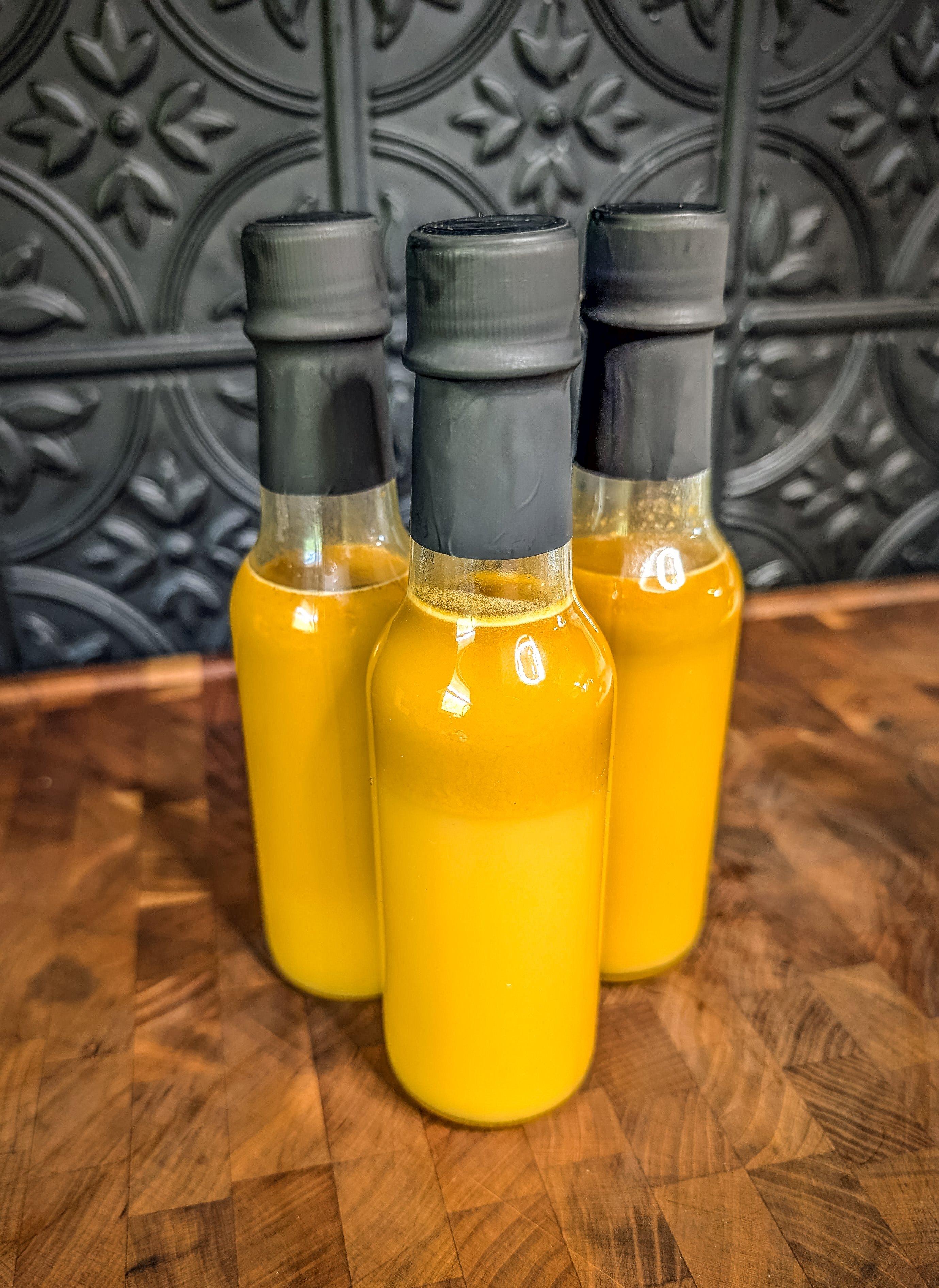
Hot sauce makes everything taste great, and it’s even better when you make it yourself. Image by H Pendley
The recipe starts with fermentation, one of mankind’s oldest means of preserving food. It starts naturally as the sugars in the peppers are broken down and consumed by natural yeast. You can add a tablespoon or so of sugar to your fermentation vessel to speed the process, but you don’t have to. The combination of fermented peppers and vinegar make the hot sauce shelf stable, but I still refrigerate after opening a bottle.
What peppers do you use? That is the beauty of homemade hot sauce. Use what you have the most of or fine tune it to make it as hot or mild as you like. For this batch, we used a combination of Serrano, banana, jalapeño, poblano, and cayenne. If you prefer more heat, add a few, or several, habanero peppers. You can even make a sauce entirely from habaneros if you are one of those crazy folks who enjoys the feeling of having your mouth on fire. One note, if including anything hotter than jalapeños, I recommend wearing gloves while slicing and handling the peppers.
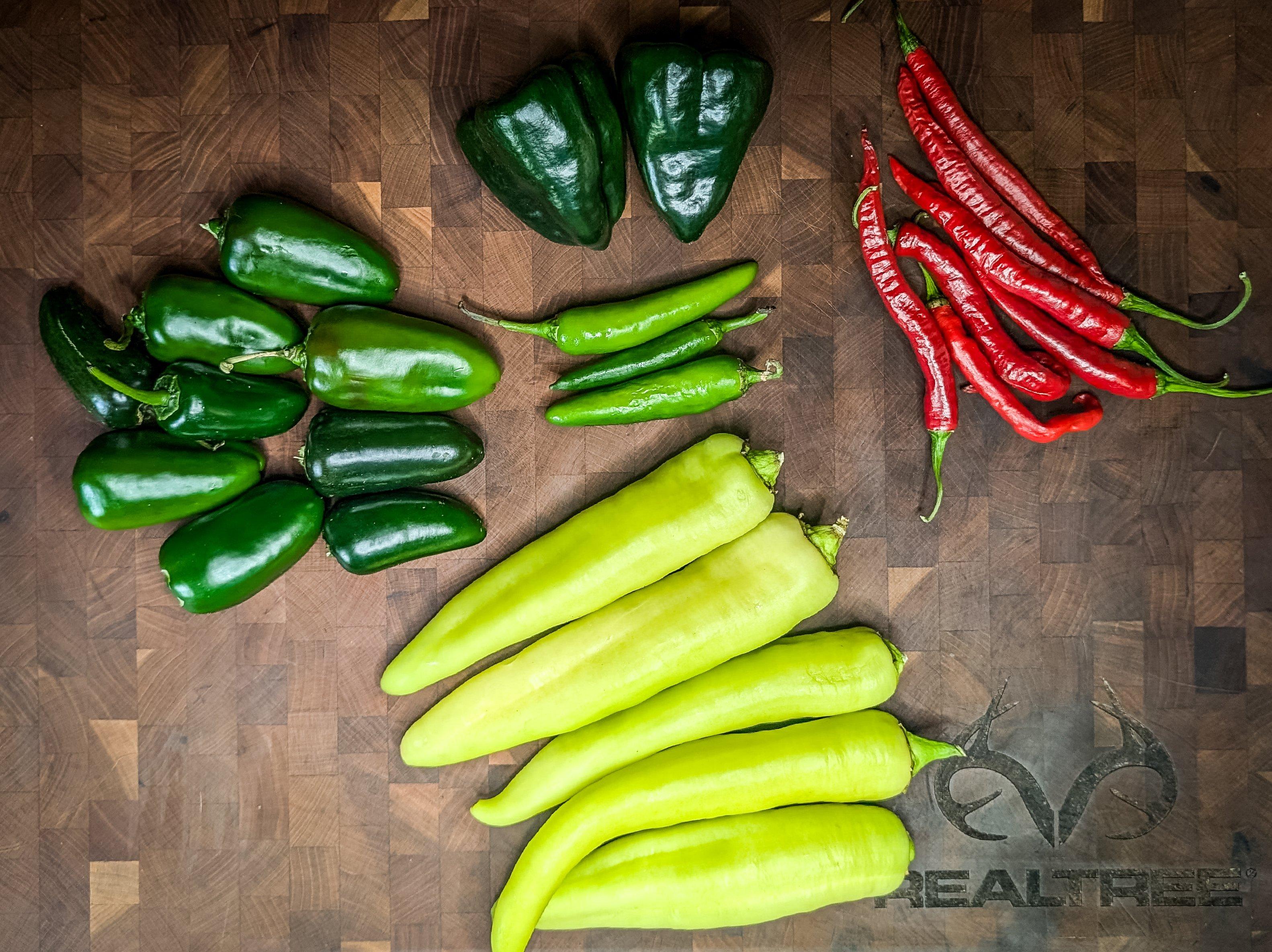
Use whatever peppers your garden is producing or stick with one type or a particular heat level to fit your tastes. Image by H Pendley
The classic vessel for fermenting hot sauce is a glass jar. Quart or half gallon sizes work well. The fermentation process emits gasses as it occurs. I like to use a soft silicone jar lid made for fermentation that is designed to allow the gas to escape as it builds. If you don’t have one of these lids, just crack the lid open every day or two to allow any built up pressure to escape.
You will need a few tools for this project including a digital kitchen scale, a mesh strainer, your fermentation vessel, and a blender or food processor. One of the most important steps is to sanitize everything as you go. To do that, you can use boiling water or dip everything into a food safe sanitizer made for home brewing. Starsan is a popular brand.
1. Sterilize your equipment, fermenting chamber, utensils. You can do this with boiling water, or with a quick rinse in Starsan brand food safe sanitizer made for home beer, mead and wine making.
2. Slice the peppers in half, lengthwise. Leave the seeds in, especially if you desire a sauce with more heat. Place the peppers in your jar or other curing chamber and cover with distilled water.
3. Place the curing chamber on a digital scale and zero it out so that your aren’t weighing the vessel. Weigh the peppers and water in grams. Trust me, just like in home charcuterie making, the metric system makes life a lot easier when figuring percentages. Measure 4% of the pepper and water weight in kosher salt.
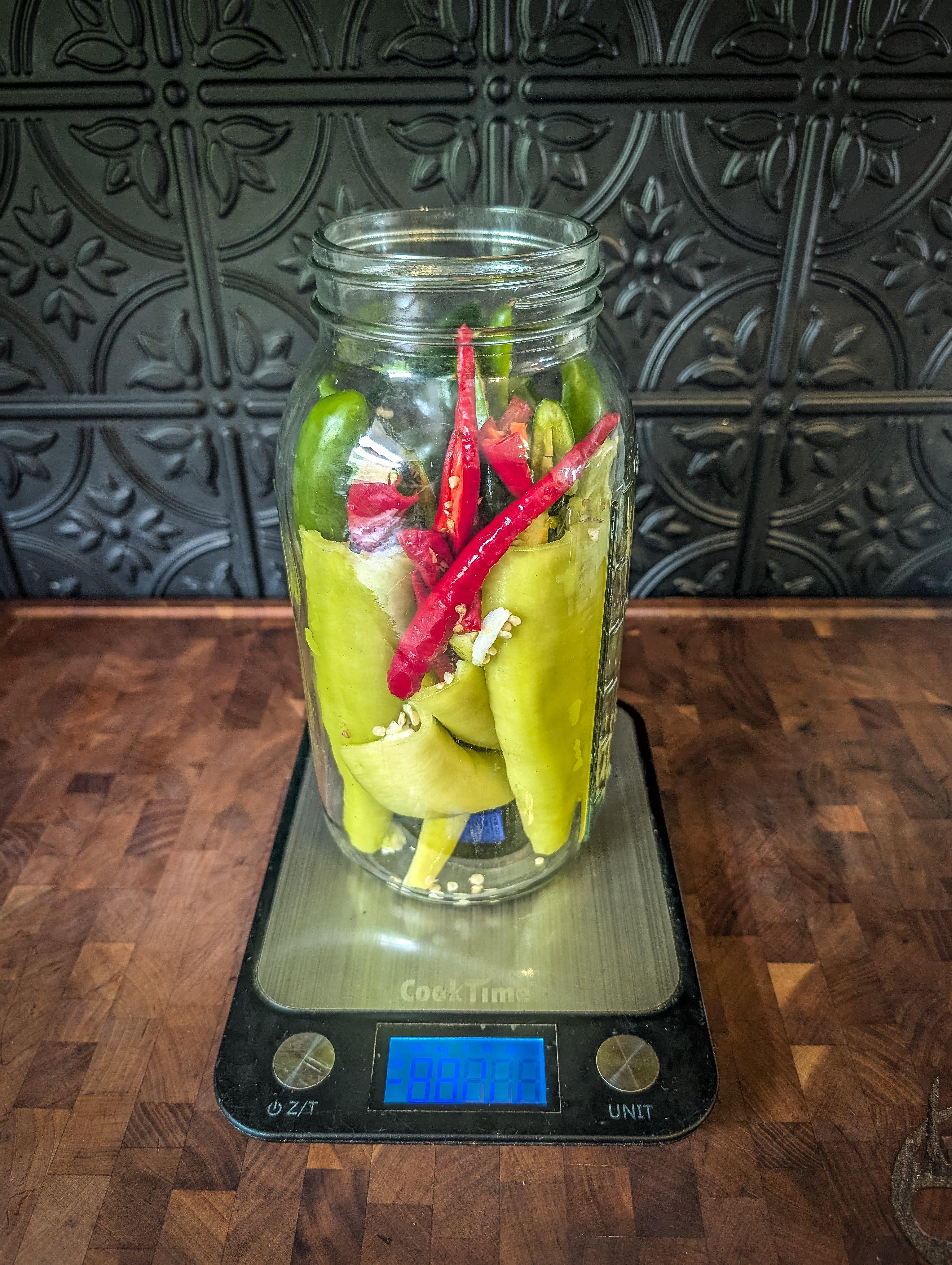
Use a digital scale for accurate weight measuring. Image by H Pendley
4. Use a sanitized fermenting weight if the peppers aren't completely submerged. I prefer to use a silicone fermenting jar lid to allow air pressure to escape as the peppers ferment, or if you are using a solid lid, burp the jars daily to release excess pressure.
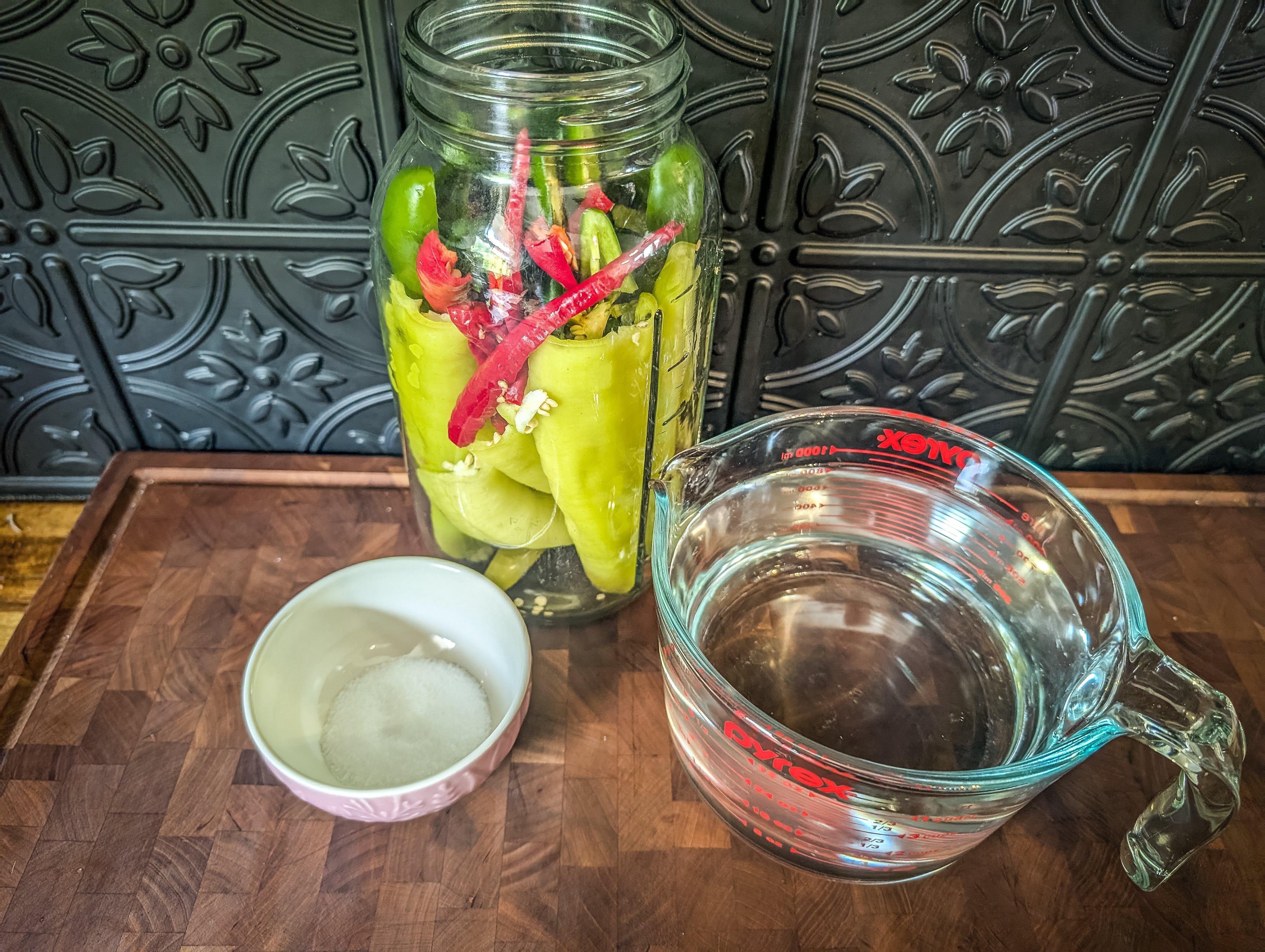
Add distilled water and kosher salt to begin the fermentation process. Image by H Pendley
5. Let the jars sit on the counter at room temperature until you see bubbles start to form, a sure sign of fermentation. You should see signs of fermentation in a couple of days. Check for growth of natural yeast or mold in the jar. White yeast growth is fine and it can be scraped off the top of the ferment with a sterilized utensil. Grey or black mold means the ferment needs to be discarded. If you get mold, your jar, lid or utensils might not have been completely sanitized. If a ferment is growing white yeast, after scraping it away, the jar can be placed into the refrigerator to prevent further growth.
6. After fermenting for the desired length of time, we go two to three weeks, strain the peppers into a clean bowl and keep the brine left from the ferment.
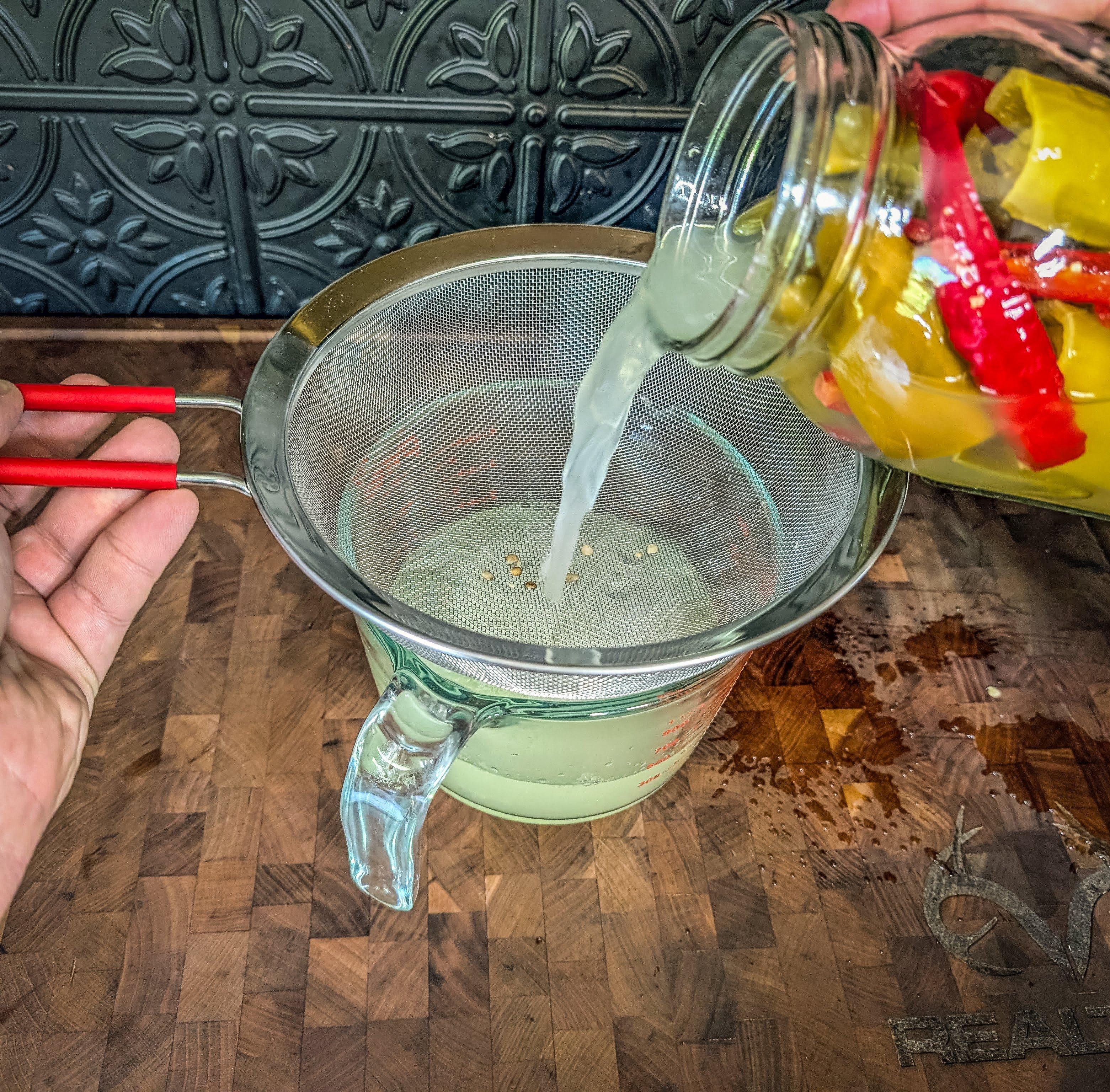
Strain the fermentation liquid off the peppers into a bowl. Image by H Pendley
Remove the seeds from your peppers if a milder flavored sauce is desired.
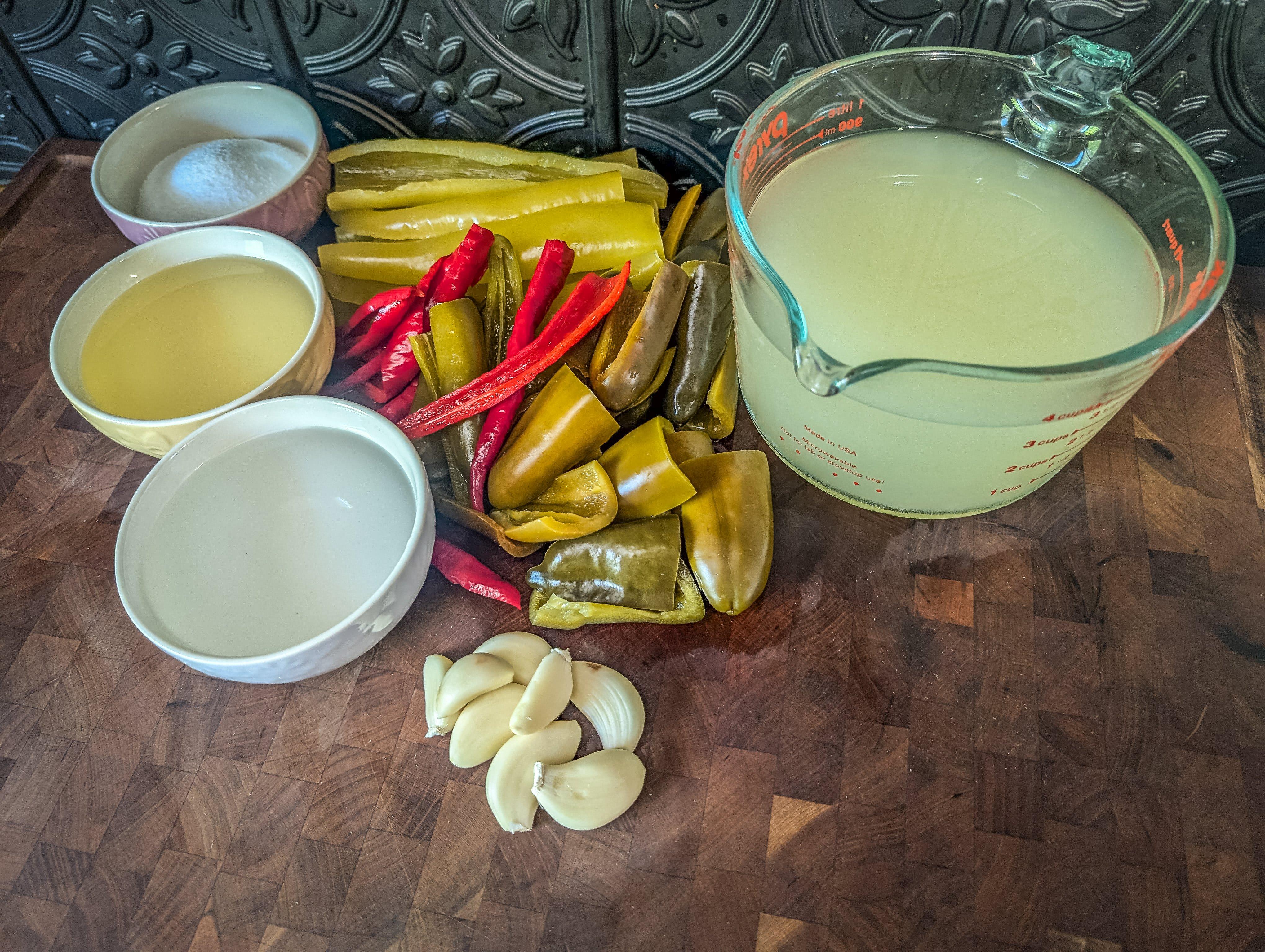
After fermenting, drain and reserve the brine and the peppers. Image by H Pendley
7. Thinly slice the garlic and gently saute it in a neutral oil until golden brown. Remove and reserve the garlic and reserve the cooking oil.
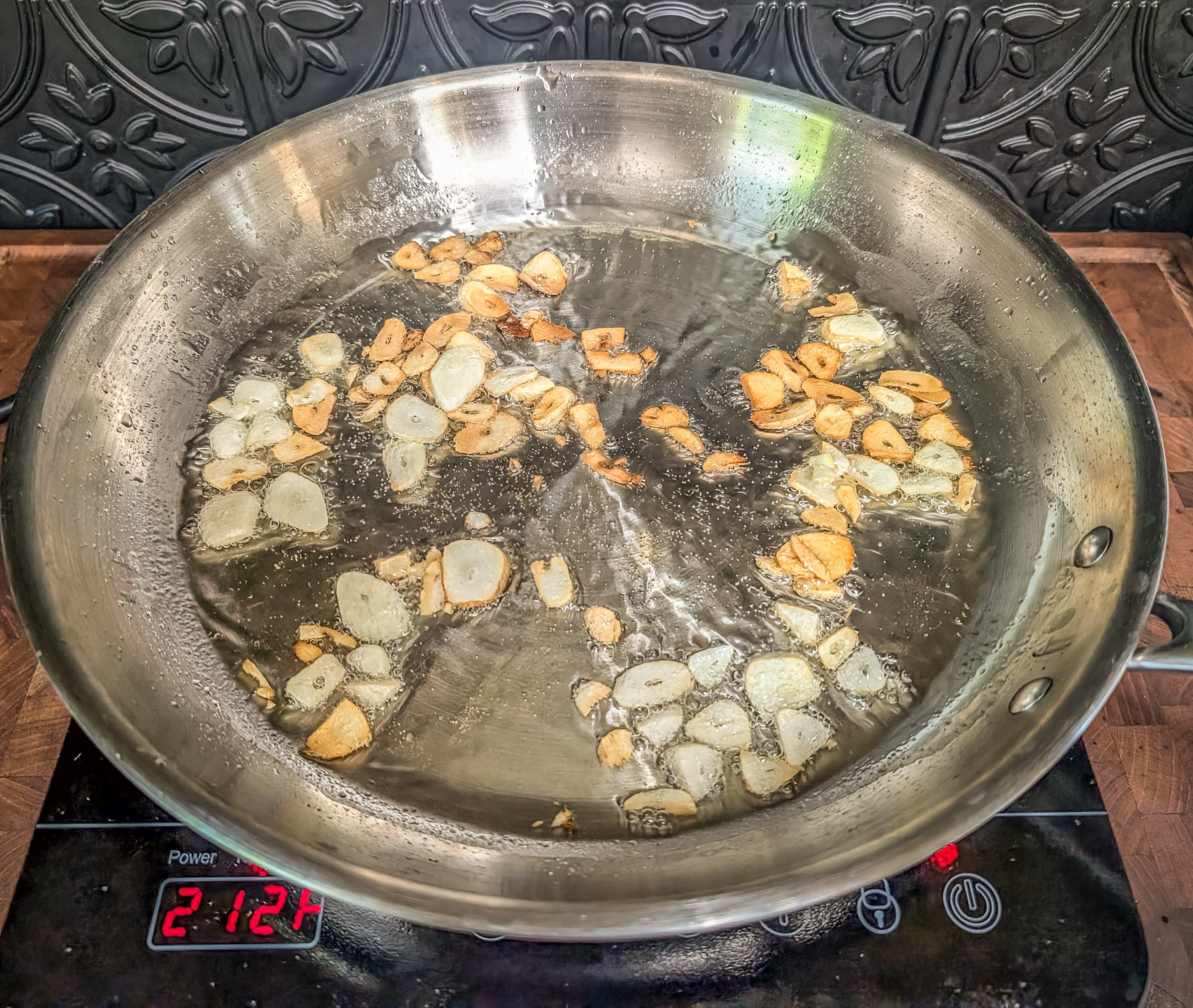
Sauté the garlic in a neutral flavored oil. Image by H Pendley
8. In a food processor or blender, combine the peppers, garlic, 3 tablespoons of the reserved brine, and the vinegar and process until the sauce is smooth. Add in half of your garlic infused oil and blend further. Taste and add more garlic oil, if needed, then add salt to taste, a bit at a time, blending thoroughly before tasting again.
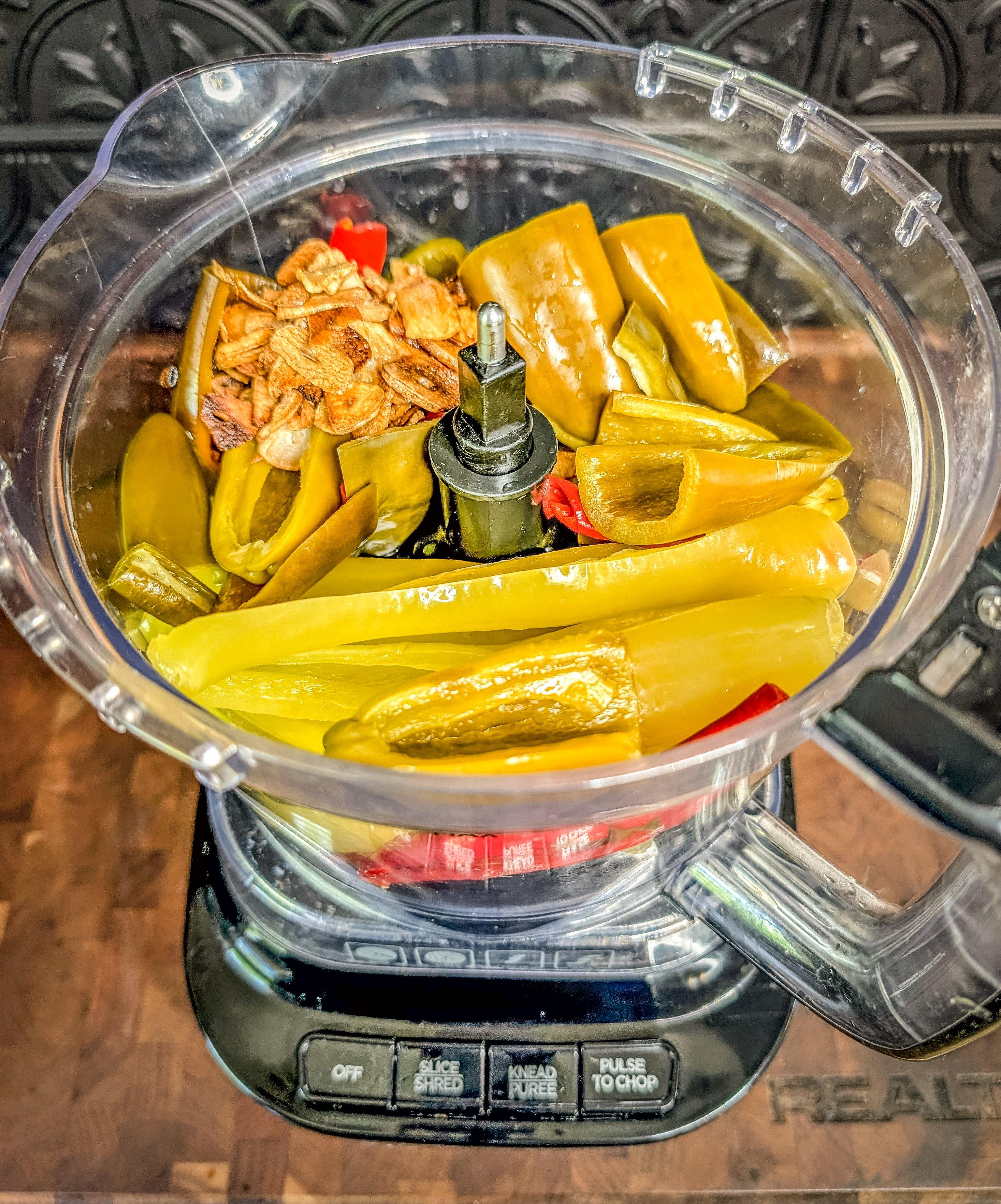
Add the peppers, garlic and a bit of the reserved brine to a blender or food processor. Image by H Pendley
9. Strain the mixture into a measuring cup and pour the strained sauce into whatever container you are keeping the sauce in.
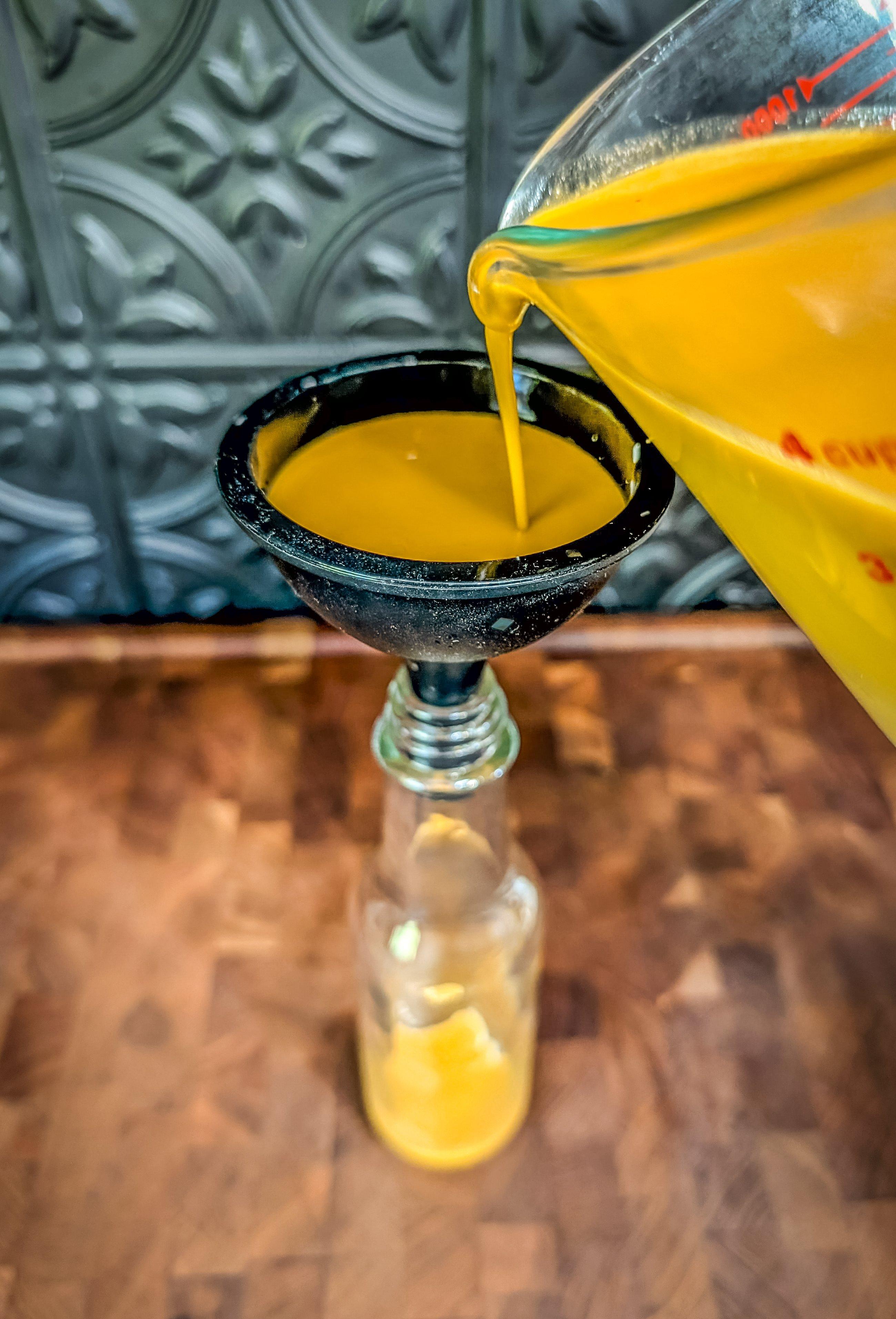
Strain and hen bottle the sauce. Image by H Pendley
I order sauce bottles and heat shrink bottle covers from amazon. Refrigerate the sauce after opening.
Ingredients
600 grams to 1 kg hot peppers of choice or a blend of different varieties
4.0% of pepper and water weight in kosher salt
Distilled water
8 cloves of garlic
1/2 cup of neutral oil; vegetable, canola or grapeseed works well
1/2 cup of distilled white vinegar
3 tbsp of the brine reserved from fermenting
salt to taste








